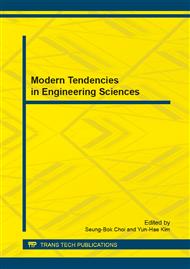p.195
p.199
p.207
p.211
p.214
p.218
p.226
p.230
p.237
Analysis and Design of Simulation System for Passive Acoustic Senor Network
Abstract:
The simulation system for passive acoustic sensor network is an important part of information fusion system. Its main function is to simulate the detection process of acoustic sensor network and produce the simulation data which is needed for testing and evaluating the target tracking algorithms. For implementation of simulation system, the target motion model and the measurement model of passive acoustic sensor must be built, and a scenario will be defined in advance when it is running. This paper discussed the passive acoustic sensor network model and gave an information fusion system structure for passive acoustic sensor network. Then the basic principle of target detection for acoustic sensor is stated. Finally, we illustrated the operation process of a simulation system for passive acoustic sensor network.
Info:
Periodical:
Pages:
214-217
Citation:
Online since:
February 2014
Authors:
Price:
Сopyright:
© 2014 Trans Tech Publications Ltd. All Rights Reserved
Share:
Citation:


